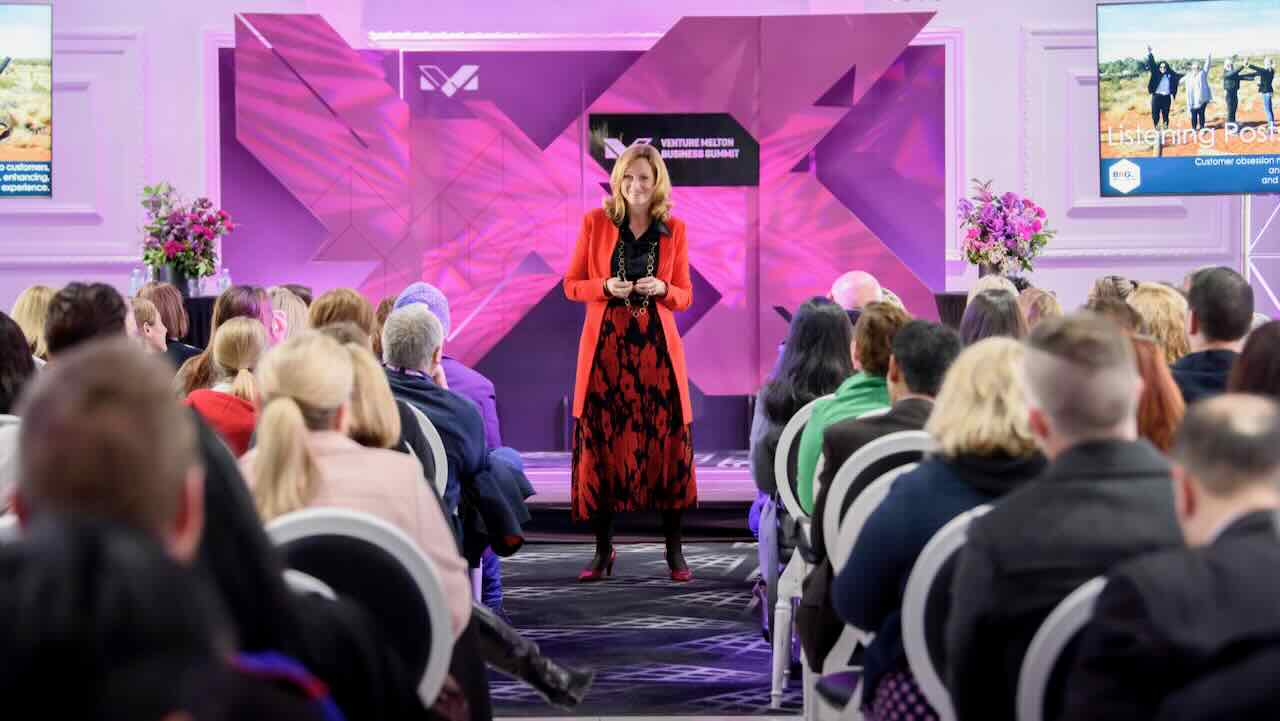Guide to Leading with Influence, Not Authority
I want you to think about the traditional image of a "boss." It's a picture deeply ingrained in our collective psyche, reinforced by a century of business practice. It's the person at the top of the pyramid, the one with the corner office and the biggest title on their business card. Their power comes from their authority. They command, and their team complies. They have the answers, and their team executes.
For generations, this was the accepted model of leadership. And in a stable, predictable, hierarchical world, it worked.
But that world is gone. And it is my job to empower audiences in my keynotes of where to from here.
We are now living and leading in an era of unprecedented change, complexity, and connection. Our teams are no longer just cogs in a machine, blindly following orders. They are a diverse, intelligent, and often geographically distributed network of creative problem-solvers. They are not looking for a boss to command them; they are searching for a leader who can inspire them.
The old, top-down, command-and-control playbook for leadership is not just outdated; it is fundamentally broken. Trying to lead a modern team with this old model is like trying to navigate a bustling city with a map from 1950. It is a recipe for disengagement, for high staff turnover, and for a catastrophic failure to innovate.
We need a new playbook.

This was the very topic of my keynote, The New Leadership Playbook. It is a message born from my own journey of having to unlearn the old rules and discover the new ones, from the structured corporate world of IBM to the scrappy, all-in beginnings of RedBalloon, and to the complex ecosystem of Big Red Group today.
I have learned, with absolute and unshakeable conviction, that the most powerful and effective leaders of today do not lead through the authority of their title. They lead through the power of their influence.
Today, I want to give you my definitive, from-the-trenches guide to this new playbook. This is not about management theory; it is a practical guide to the real, human skills required to bring people along on the ride, to align them to a shared cause, and to inspire them to be the very best version of themselves.
The Great Shift - From Authority to Influence
The first and most important step in embracing the new playbook is to understand the profound shift from a leadership model based on authority to one based on influence.
- Authority is given to you by your position on an org chart. It is the power to compel action. "You have to do this because I am your boss." It is a finite and fragile source of power.
- Influence is earned through your actions and your character. It is the ability to inspire voluntary action. "I want to do this because I believe in what we are trying to achieve, and I trust you to lead us there." It is a renewable and deeply resilient source of power.
A leader who relies solely on their authority will get, at best, compliance. Their team will do the bare minimum required to keep their jobs and not get into trouble.
A leader who cultivates influence, on the other hand, will get commitment. Their team will bring their full creativity, their passion, and their discretionary effort to the table. They are not just "doing a job"; they are part of a mission.
As I've always said, if it is to be, it is up to me. That is the essence of taking ownership. But for a leader, that "me" quickly has to become a "we." Your job is not to do all the work, but to get people to come along for the ride. And that requires influence, not just authority.
So, how do you build it? Influence is not a single skill; it is the outcome of a consistent practice of four key leadership behaviours.

Leading with Influence, Not Authority
The Four Pillars of the New Leadership Playbook
If you want to build genuine influence and become a leader that people want to follow, you must build your leadership practice on these four powerful pillars.
Pillar 1: The Power of Purpose (The "Why")
This is the bedrock. It is the starting point for all great leadership. You cannot inspire commitment if you cannot articulate a compelling reason for that commitment to exist.
A transactional leader talks about the "what"—the sales targets, the project deadlines, the KPIs. A transformational leader, as I explore in my keynote on the topic, starts with the "why".
- What is the deeper purpose of our work?
- What is the change we are trying to make in the world for our customers?
- Why does what we do, every single day, actually matter?
At RedBalloon, our purpose was never just "to sell gift vouchers online." It was "to change the nature of gift-giving in Australia from stuff to experiences." That was a mission. It was a cause. It was a "why" that was big enough and inspiring enough to attract a team of passionate "memory-makers" who were willing to pour their hearts into their work.
As a leader, you are the Chief Purpose Officer. It is your job to relentlessly communicate the "why," to connect your team's daily tasks to that bigger, more meaningful mission, and to ensure that everyone in the organisation has a clear line of sight between their work and the impact it has on the customer's life.

Pillar 2: The Art of the Story (The "How")
A purpose statement on its own is just a collection of words on a wall. To bring that purpose to life, to make it real and tangible for your team, you must master the art of storytelling.
Facts and figures speak to the logical mind, but stories are what capture the heart. And in leadership, you must win the heart before you can fully engage the mind.
A great leader is a great storyteller.
- They tell stories of the customer, bringing their struggles and their triumphs directly into the business.
- They tell stories of the team, celebrating the wins and, just as importantly, sharing the lessons learned from the failures.
- They tell stories of the future, painting a vivid, compelling picture of the destination they are all journeying towards together.
These stories become the mythology of your company. They are the modern-day fables that communicate your values, your priorities, and your culture in a way that a thousand corporate memos never could. Storytelling is the core mechanism for building a shared identity and a sense of belonging.
Pillar 3: The Gift of Clarity (The "What")
Once you have inspired your team with the "why" and engaged them with the "how," you must provide them with the gift of clarity. In a complex and fast-moving world, the absence of clarity is the root of all anxiety and wasted effort.
It is a leader's job to be the architect of clarity.
- Clarity of Direction: This is your one-page strategic plan. Everyone must know the top 3-5 priorities for the year and for the quarter.
- Clarity of Roles: Everyone must know what they are responsible for, what their "swim lane" is, and how their success will be measured.
- Clarity of Communication: You must create a culture of open, honest, and consistent communication. A great leader understands that in a vacuum of information, people will fill the void with their own fears and assumptions. It is your job to over-communicate, to be transparent, and to ensure that everyone has the information they need to do their best work.
Clarity is not about micromanaging. It is about creating the psychological safety and the clear boundaries that give your team the confidence and the freedom to act with autonomy.
Pillar 4: The Practice of Coaching (The "Who")
This is the final, and most human, pillar. The old playbook was about the leader being the expert, the one with all the answers. The new playbook is about the leader being the coach, the one who is brilliant at asking the right questions.
Your job is not to solve your team's problems for them. Your job is to build their capability to solve problems for themselves.
- Lead with Questions: Instead of providing the solution, ask questions like, "What have you tried so far?" "What are your options?" "What support do you need from me to move forward?"
- Invest in Their Growth: Have regular, explicit conversations with your people about their career aspirations. A great leader is a talent developer. They see their team not as resources to be managed, but as individuals to be grown.
- Challenge Them to Greatness: A great coach sees the potential in their people before they see it in themselves, and they have the courage to challenge them to step up and meet that potential.
This coaching approach builds a team that is not just compliant, but capable, confident, and empowered.

Leadership is a Choice, Not a Position
The new leadership playbook is not about a radical new theory. It is a return to a more timeless and more human way of leading.
It is the understanding that true power comes not from the authority of your title, but from the influence you earn through your actions. It is built on a foundation of a clear and inspiring purpose. It is brought to life through the power of storytelling. It is enabled by the gift of clarity. And it is scaled through a deep commitment to coaching your people to become the best version of themselves.
This is not a playbook just for the CEO. It is a mindset that is available to every single person in an organisation, at every level. It is the choice to take ownership, to serve others, and to lead with influence, not just authority.
This is the leadership that our modern world is crying out for. This is the leadership that will build the great, enduring, and deeply human organisations of the future.





